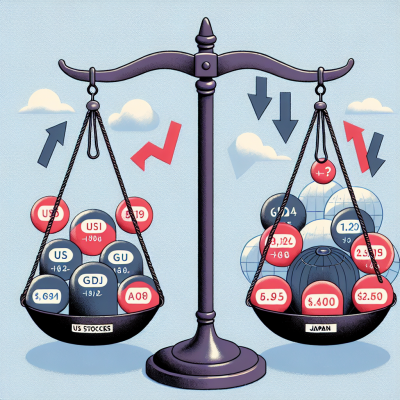
Wall Street Pauses as Global Economic Signals Stir Uncertainty
US stock futures kicked off the trading day relatively flat, as investors process mixed signals from global markets and grapple with ongoing macroeconomic concerns. After a choppy session on Wall Street, market participants now seem wary amid signs of economic strain overseas — particularly in Asia, where Japan’s GDP contraction has fueled caution across the board.
Wall Street’s Tepid Start Reflects Investor Caution
Tuesday morning opened with little momentum in US stock futures, as the previous day’s optimism gave way to more guarded sentiment. Though initial relief was sparked by signs of easing trade tensions between Washington and Beijing, lingering concerns around inflation and tariffs initiated under the Trump administration continue to weigh heavily on investor confidence.
Tech stocks led modest gains on Monday, with the Nasdaq eking out slight improvement, but overall momentum remained subdued. The Dow Jones Industrial Average and the S&P 500 both wavered throughout the day, closing marginally higher as traders weighed risks versus opportunities in what appears to be a volatile landscape.
Resurfaced Tariff Fears Challenge Optimism
One of the main factors behind the stalled market this morning is the intensifying scrutiny on trade policies — particularly the lasting effects of the tariff structures initiated during former President Donald Trump’s tenure. While trade tensions globally have eased somewhat, the residual impact of tariffs continues to inflict uncertainty, especially for multinational companies dependent on cost-sensitive supply chains.
Key sectors such as manufacturing and agriculture remain exposed, and investors seem anxious about the long-term effects on profit margins and pricing.
Asian Markets Send Mixed Signals
Across the Pacific, the mood is equally complex. Asian markets traded in mixed territory, reflecting both local concerns and reactions to global developments. The biggest headline out of Asia comes from Japan, where the latest GDP figures revealed a contraction — a clear indicator of economic cooling.
Japan’s Economy Contracts: A Warning for Global Growth
In a move that rattled confidence in the region, Japan reported a significant contraction in its Gross Domestic Product. This unexpected shrinkage has reinforced broader fears that the global economy may be facing slower-than-expected growth in the second half of the year. Economists had been bracing for a sluggish quarter, but the steepness of the decline appears to have caught many off guard.
Some contributing factors to Japan’s GDP drop include:
- Declining consumer spending amid rising prices and stagnant wage growth
- A weakening yen, which has increased the cost of imported goods
- Sluggish export growth due to softer demand in key markets like China and the US
Tokyo’s Nikkei 225 fell modestly following the GDP release, while other indices in the region showed mixed performance. China’s Shanghai Composite remained relatively stable, though gains were muted. Hong Kong’s Hang Seng reversed early losses to close slightly higher, buoyed by tentative optimism around tech and property shares.
Markets Await Further Guidance from Central Banks
Investors globally are also watching central bank actions very closely. The Federal Reserve holds a precarious position as inflation remains sticky and the labor market shows resilience. Markets are divided over when and how aggressively the Fed might adjust interest rates later this year.
Similarly, the Bank of Japan’s response to the GDP decline will be pivotal. With inflation still persistent, the BoJ may face pressure to stimulate growth without exacerbating price pressures — a delicate balancing act that could influence global capital flows.
Key Takeaways for Investors
With markets treading cautiously, here are a few takeaways for traders and investors eyeing the current landscape:
- Expect continued volatility as macro data from both developed and emerging markets influence sentiment
- Watch central bank commentary closely, especially from the Fed, for signals on rate paths
- Stay diversified amid sectoral shifts and potential pullbacks in valuation-heavy stocks
Short-Term Outlook: Stay Vigilant
Investors may have been hoping for momentum following signs of reduced US-China trade friction, but the resurgence of growth concerns, particularly out of Asia, has tempered expectations. Until there’s clearer economic direction — and assurance that inflation and growth are normalizing — markets will likely remain sensitive to every data point and policy comment.
Conclusion: A Fragile Recovery, A Watchful Market
The global equity landscape is currently shaped by a tenuous balance between improving trade relations and lingering structural issues — from tariffs to faltering GDP numbers. With the US stock futures flat and Asian markets sending conflicting cues, the near-term focus is now firmly on central banks, global economic data, and how effectively nations can navigate a slowing economic tide.
Traders and long-term investors alike would be wise to stay nimble, remain data-driven, and prepare for a market still in the throes of adjustment.


Leave a Reply